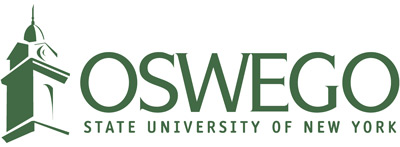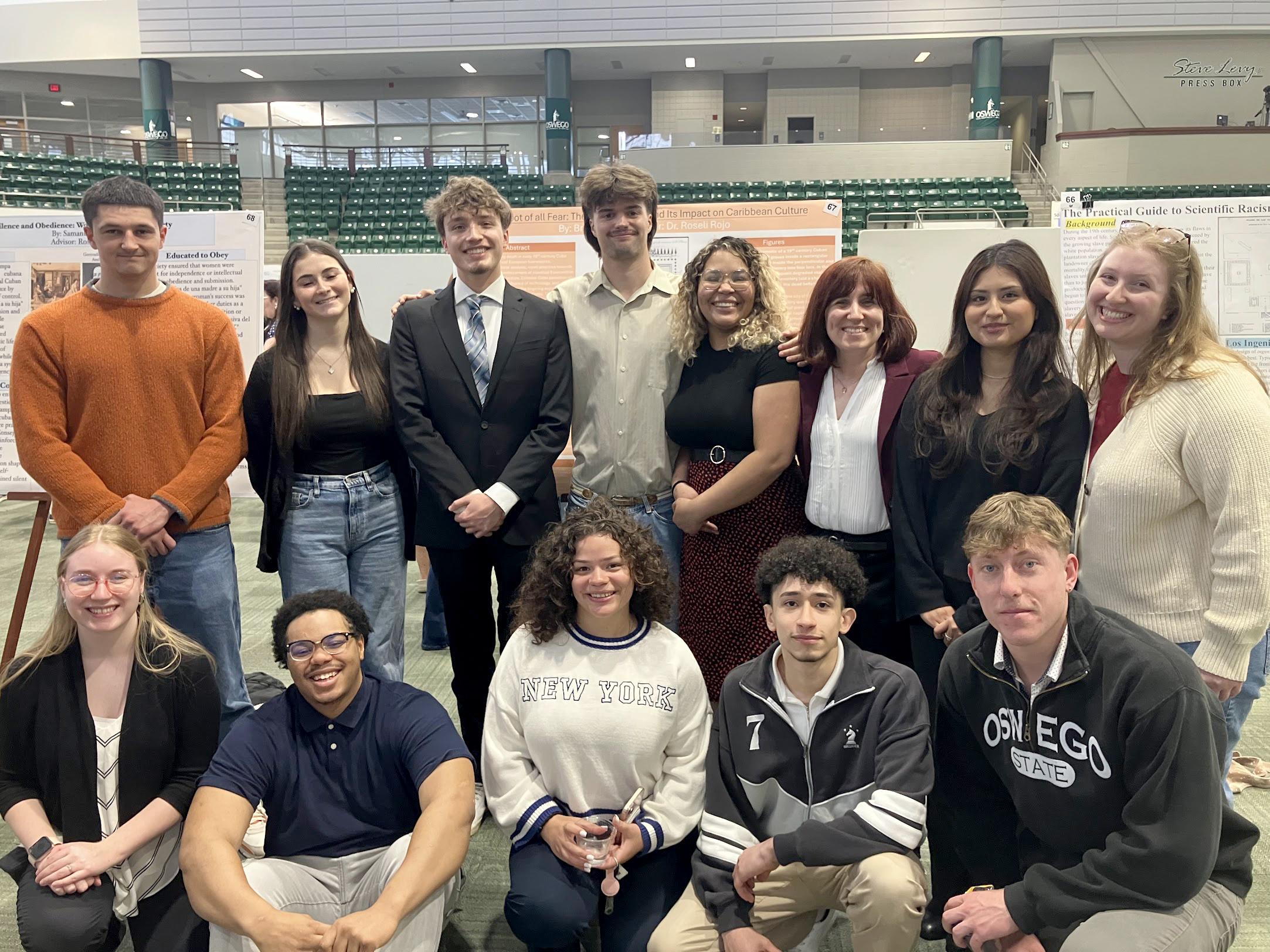Sudents from Spanish 395/495, "The Caribbean in Colonial Times," participated in Quest 2025 presentations. Standing from left are students Zane Moheimani, Samantha Salvia, Brian Pond, Charles Borden, Mariah Pepper; faculty member Roseli Rojo; and students Michelle Granda, and Merin Hemminger. In front from left are students Simon Daw, Jason Mejias, Kelsey Perez, Jevon Walton and Brianna Grace.
During Quest on April 23, 13 students from Spanish 395/495, "The Caribbean in Colonial Times" — an upper-division course taught by Roseli Rojo in the Department of Modern Languages and Literatures — presented research posters examining the complexities of life in the colonial Caribbean.
These posters, each tailored to students’ individual interests, represent a crucial step in the development of their final essays. Students reflected on how their research helped them connect the colonial past to present-day cultural concerns:
- Mariah Pepper studied "The Vademecum of the Cuban Landowners," a medical guide used to regulate enslaved people in sugar mills. “This topic matters to me because it helps me reflect on how Afrodescendant communities continue to face medical discrimination — an issue rooted in colonial stereotypes that persist today.”
- Brian Pond recounted a special moment during the event: “During Quest, a curious spectator asked me to present my poster — about the fear of death and the construction of cemeteries — in Spanish, as he was from Cuba and had visited Havana himself. It was a great pleasure to give him a slice of home and to see how far I have come in Spanish, as he understood everything I said. It was truly rewarding to facilitate that cultural exchange.”
- Merin Hemminger explored the presence of wet nurses in the colonial Caribbean and their literary portrayals: “These depictions of Black women continue to shape the racist stereotypes we see today in media and everyday life.”
- Jason Mejías shared: “Being given the opportunity to participate in Quest for the first time was both a learning experience and a pleasure. My poster analyzes two characters, el zacateca and la vieja curandera, from 19th-century Cuban society.”
- Jevon Walton explored the work of lithographer Frédéric Mialhe: “His prints reflect the tension in Cuba during a time when the elites feared a Haitian-style revolution. While enticing wealthy Europeans, he also documented the harsh realities of slavery.” Walton’s performance at Quest was also featured by The Oswegonian.
- Brianna Grace studied the cartoon character Elpidio Valdés, created in the 1970s as a symbol of Cuban identity and anticolonial resistance. “The episode I analyzed, 'Elpidio Valdés contra el tren militar,' shows him defeating Spanish colonial forces with his mambí army. It’s a powerful example of how cartoons were used to teach children anticolonial values.”
- Charles Borden described his research: “Participating in Quest Day for the first time was a pleasure, and I was very excited to share my research and answer some very good questions. My poster explores the evolution of Spanish naval vessels, specifically how influence from other countries helped strengthen the Spanish Armada through industrial espionage and the transfer of power within the shipbuilding industry.”
- Michelle Granda analyzed "The Eye of the Canary," a film about Cuban national hero José Martí’s youth and political awakening. “Presenting on this topic at Quest was an amazing opportunity. The film shows how Martí’s ideas were shaped by the injustices of colonial rule and the beauty of his homeland.”
- Zane Moheimani examined the criminalization of Afro-Cuban religions through pseudo-scientific ideologies such as Darwinism. “Despite attempts to eliminate them, these religions have persisted and become a fundamental part of Caribbean heritage.”
- Simon Daw presented on the role of children’s literature in the 19th century: “I analyzed two texts by José Martí and discussed why this genre is so important. I had a great time presenting and learned a lot about all the topics.”
- Kelsey Perez said, “I studied the gender roles of men and women in Puerto Rican colonial society as described in the book 'El Gíbaro' by Manuel Alonso. I also examined how this theme was portrayed in the painting 'The Wake' by Francisco Oller.”
- Samantha Salvia explored 19th-century manuals on women’s education to understand what has been described as "the traps of women’s education in the 19th century." She noted that the entire educational program was designed solely to prepare women for motherhood.
- Erik Lupien focused on music as a form of resistance: “African rhythms — initially used as chants for liberty — were gradually absorbed into local celebrations. As Cuba approached independence, these rhythms became foundational to Cuban national identity.”
For more information and photos of the presentation, visit the Modern Languages and Literatures Facebook page.
-- Submitted by the Modern Languages and Literature Department




